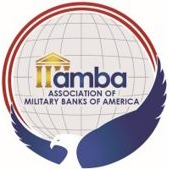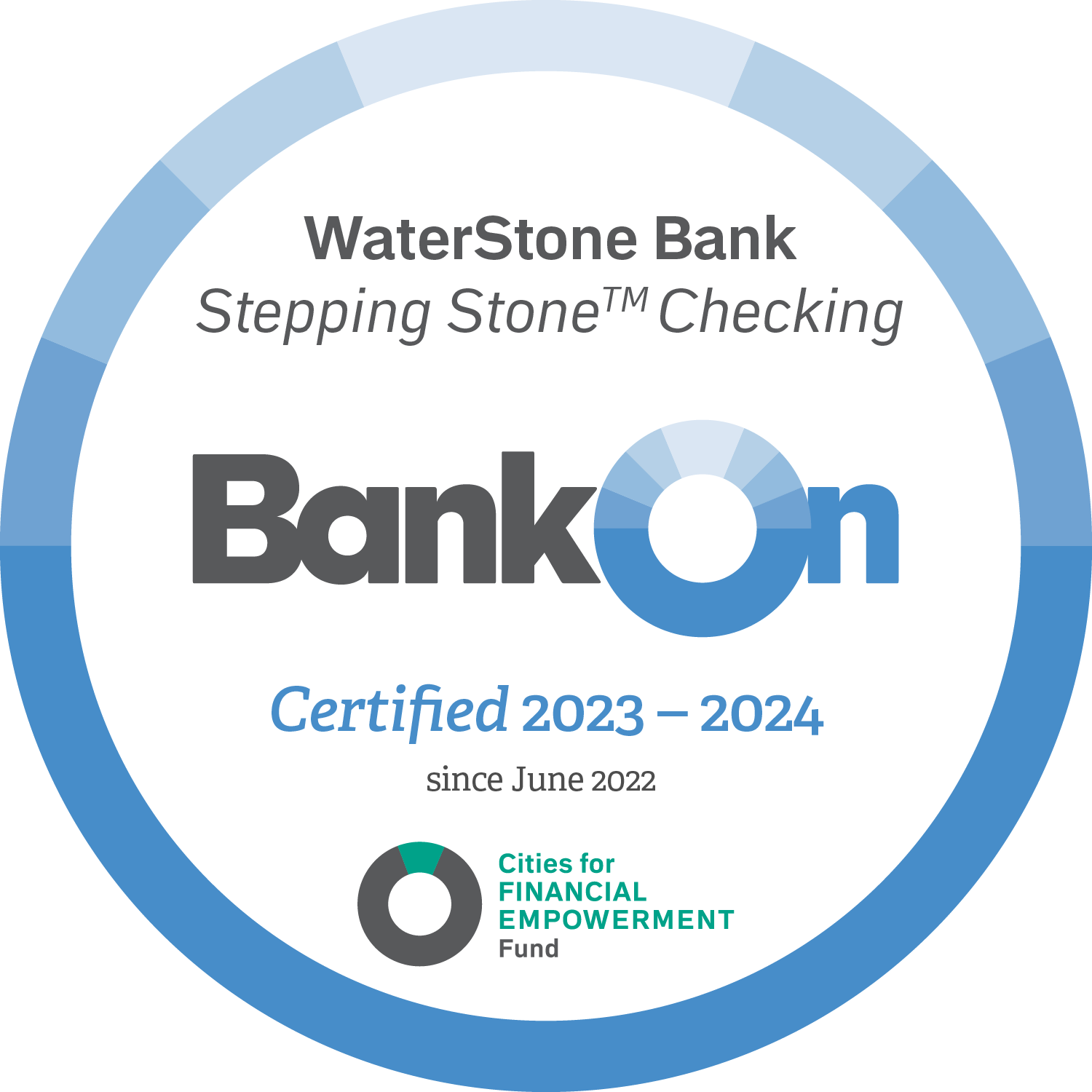WAUWATOSA, Wis. – 04/28/2020 – Waterstone Financial, Inc. (NASDAQ: WSBF), holding company for WaterStone Bank, reported net income of $6.9 million, or $0.27 per diluted share for the quarter ended March 31, 2020 compared to $6.5 million, or $0.24 per diluted share for the quarter ended March 31, 2019.
“We are proud of our first quarter financial results as we navigate through these unprecedented times,” said Douglas Gordon, CEO of Waterstone Financial, Inc. “While continuing to manage our financial well-being, we maintain a devout focus on keeping our employees, customers, and communities safe. As shareholders, you should be extremely proud of how our employees have accepted the challenges presented by the pandemic and continued to service and exceed the expectations of our customers.”
Highlights of the Quarter Ended March 31, 2020
Waterstone Financial, Inc. (Consolidated)
- Consolidated net income of Waterstone Financial, Inc. totaled $6.9 million for the quarter ended March 31, 2020, compared to $6.5 million for the quarter ended March 31, 2019.
- Consolidated return on average assets was 1.37% for the quarter ended March 31, 2020 compared to 1.39% for the quarter ended March 31, 2019.
- Consolidated return on average equity was 7.07% for the quarter ended March 31, 2020 and 6.65% for the quarter ended March 31, 2019.
- Dividends declared totaled $0.62 per share and we repurchased $14.2 million of shares during the quarter ended March 31, 2020 as a result of our strong financial position.
Community Banking Segment
- Pre-tax income totaled $5.3 million for the quarter ended March 31, 2020, which represents a 29.6% decrease compared to $7.5 million for the quarter ended March 31, 2019.
- Net interest income totaled $12.9 million for the quarter ended March 31, 2020, which represents a 1.7% decrease compared to $13.1 million for the quarter ended March 31, 2019.
- Average loans held for investment totaled $1.39 billion during the quarter ended March 31, 2020, which represents an increase of $16.8 million, or 1.2%, compared to $1.38 billion for the quarter ended March 31, 2019. Average loans held for investment increased $12.2 million, or 3.5% annualized, compared to $1.38 billion for the quarter ended December 31, 2019.
- Net interest margin decreased 25 basis points to 2.68% for the quarter ended March 31, 2020 compared to 2.93% for the quarter ended March 31, 2019, which was a result of the decrease in yield of interest-earning assets as rates on loans and cash decreased along with an increase in cost of funding as money market accounts, certificates of deposit, and borrowings repriced at higher rates over the past year. Net interest margin decreased 11 basis points compared to 2.79% for the quarter ended December 31, 2019.
- The segment had a $750,000 provision for loan losses for the quarter ended March 31, 2020 compared to a negative provision for loan losses of $700,000 for the quarter ended March 31, 2019. The provision expense recorded during the first quarter of 2020 primarily consisted of an increased allocation related to the economic condition qualitative factor across all portfolio segments. The current year provision also reflected loan growth during the quarter ended March 31, 2020. Net recoveries totaled $54,000 for the quarter ended March 31, 2020, compared to net charge-offs of $8,000 for the quarter ended March 31, 2019.
- Noninterest expense increased $684,000 for the quarter ended March 31, 2020 compared to the quarter ended March 31, 2019. Compensation, payroll taxes and other employee benefits expense increased $412,000 as salaries increased due to annual raises and additional branches added in late 2019 and health insurance expense increased. Data processing expense increased $148,000 as we continue to make investments in technology.
- The efficiency ratio was 56.84% for the quarter ended March 31, 2020, compared to 51.64% for the quarter ended March 31, 2019.
- Average deposits (excluding escrow accounts) totaled $1.08 billion during the quarter ended March 31, 2020, an increase of $39.3 million, or 3.8%, compared to $1.04 billion during the quarter ended March 31, 2019. Average deposits increased $21.8 million, or 8.3% annualized compared to the $1.06 billion for the quarter ended December 31, 2019.
- Nonperforming assets as percentage of total assets was 0.36% at March 31, 2020, 0.39% at December 31, 2019, and 0.44% at March 31, 2019.
- Past due loans as percentage of total loans was 0.78% at March 31, 2020, 0.47% at December 31, 2019, and 0.46% at March 31, 2019.
Mortgage Banking Segment
- Pre-tax income totaled $3.8 million for the quarter ended March 31, 2020, compared to $1.0 million for the quarter ended March 31, 2019.
- Loan originations increased $207.4 million, or 41.4%, to $708.8 million during the quarter ended March 31, 2020, compared to $501.4 million during the quarter ended March 31, 2019. Origination volume relative to purchase activity accounted for 68.3% of originations for the quarter ended March 31, 2020 compared to 89.9% of total originations for the quarter ended March 31, 2019.
- Mortgage banking income increased $7.2 million, or 30.7%, to $30.8 million for the quarter ended March 31, 2020, compared to $23.6 million for the quarter ended March 31, 2019.
- Gross margin on loans sold decreased to 4.08% for the quarter ended March 31, 2020, compared to 4.57% for the quarter ended March 31, 2019.
- Total compensation, payroll taxes and other employee benefits increased $3.3 million, or 20.7%, to $19.4 million during the quarter ended March 31, 2020 compared to $16.1 million during the quarter ended March 31, 2019. The increase primarily related to increased commission expense and branch manager compensation driven by increased loan origination volume.
- Other noninterest expense increased $640,000, or 33.5%, to $2.6 million during the quarter ended March 31, 2020 compared to $1.9 million during the quarter ended March 31, 2019. The increase related to a $960,000 increase in the provision for losses on loans sold to the secondary market that trigger early payment default provisions with investors. If triggered, the default provisions require a return of servicing release premium or an obligation to repurchase the loan.
Recent Developments:
COVID-19 Pandemic and the CARES Act
The COVID-19 pandemic has caused economic and social disruption on an unprecedented scale. While some industries have been impacted more severely than others, all businesses have been impacted to some degree. This disruption has resulted in the shuttering of businesses across the country, significant job loss, and aggressive measures by the federal government. The Coronavirus Aid, Relief and Economic Security (“CARES”) Act was signed into law at the end of March 2020 as a $2 trillion legislative package. The goal of the CARES Act is to prevent a severe economic downturn through various measures, including direct financial aid to American families and economic stimulus to significantly impacted industry sectors. In addition to the general impact of COVID-19, certain provisions of the CARES Act as well as other recent legislative and regulatory relief efforts are expected to have an impact on our operations. While it is not possible to know the full universe or extent of these impacts as of the date this filing, we are disclosing potentially material items of which we are aware.
- The CARES Act allows for a temporary delay in the adoption of accounting guidance under Accounting Standards Codification Topic 326, “Financial Instruments – Credit Losses (“CECL”) until the earlier of December 31, 2020 or the 60th day after the end of the COVID-19 national emergency. During the quarter ended March 31, 2020, pursuant to the recently-enacted CARES Act and guidance from the Securities and Exchange Commission (“SEC”) and Financial Accounting Standards Board (“FASB”), we elected to delay adoption of CECL. Our first quarter financial statements include an allowance for loan losses that was prepared under the existing incurred loss methodology.
- Under the CARES Act, loans less than 30 days past due as of December 31, 2019 will be considered current for COVID-19 modifications. A financial institution may then suspend the requirements under accounting principles generally accepted in the United States (US GAAP) for loan modifications related to COVID-19 that would otherwise be categorized as a troubled debt restructuring (“TDR”). This includes a suspension of the requirement to determine impairment of these modifications for accounting purposes. In keeping with regulatory guidance to work with borrowers during this unprecedented situation, the Company is executing a payment deferral program for our lending clients that are adversely affected by the pandemic. As of April 24, 2020, the Company had modified 154 loans aggregating $100.2 million consisting of the payments of interest (deferral of principal) for a period ranging from 90 to 180 days. In addition, as of that same date the Company had modified 13 loans aggregating $7.2 million consisting of the deferral of principal and interest for a period of 3 months. In accordance with interagency guidance issued in April 2020, these short term deferrals are not considered troubled debt restructurings.
- The CARES Act authorized the Small Business Administration (“SBA”) to temporarily guarantee loans under a new loan program call the Paycheck Protection Program (“PPP”). As a qualified SBA lender, we were automatically authorized to originate PPP loans. The Company is actively participating in assisting our customers with applications for resources through the program. PPP loans will have: (a) an interest rate of 1.0%, (b) a two-year loan term to maturity; and (c) principal and interest payments deferred for six months from the date of disbursement. The SBA will guarantee 100% of the PPP loans made to eligible borrowers. The entire principal amount of the borrower’s PPP loan, including any accrued interest, is eligible to be reduced by the loan forgiveness amount under the PPP. As of April 24, 2020, we had processed 224 applications representing up to $28.7 million in funding under the program. As of that same date, the SBA had approved 153 of those loans representing $23.9 million.
Business Continuity Plan
The Company maintains a team to respond to, prepare, and execute responses to unforeseen circumstances, such as, natural disasters and pandemics. Upon the pandemic declaration, the Company deployed a successful remote working strategy, provided timely communication to team members and customers, implemented protocols for team member safety, and initiated strategies for monitoring and responding to local COVID-19 impacts – including customer relief efforts. The Company’s preparedness efforts, coupled with quick and decisive plan implementation, resulted in minimal impacts to operations as a result of COVID-19. Prior technology planning resulted in the successful deployment of the majority of our operational teams to a remote environment. Due to the nature of their functions, select team members continue to operate from physical Company locations, while effectively employing social distancing standards. No material operational or internal control challenges or risks have been identified to date. As of March 31, 2020, we do not anticipate significant challenges to our ability to maintain our systems and controls in light of the measures we have taken to prevent the spread of COVID-19. The Company does not currently face any material resource constraints through the implementation of our business continuity plans.
Community Bank Retail operations
The Company is committed to assisting our customers and communities in this time of need. Our retail bank branch locations have converted to drive-up only in order to ensure the health and safety of our customers and team members. The branches have been supplied with gloves and disinfectant materials for lobby, drive-up and ATM equipment. We continue to serve our customers that need emergency branch access. The Company has been able to open and close accounts effectively, through its drive-up facilities and our Call Center is successfully managing the volume of incoming calls. The Company continues to monitor the safety of our staff. With reduced access to the lobby, our staffing is adequate to address the requests for time off by any of our employees who are impacted by health or child care issues.
Mortgage Banking Segment
The COVID-19 pandemic has resulted in significant disruption to the mortgage banking market. As such, that disruption presents the potential to increase the magnitude of risk inherent in this line of business, including the following:
- Increased exposure to early payment defaults on loans sold to investors on the secondary market
The Company’s agreements to sell residential mortgage loans in the normal course of business contain limited recourse provisions. The recourse provisions are limited in that the recourse provision ends after certain payment criteria have been met. If defined delinquency issues occur during the limited recourse period, a loan repurchase or a return of the servicing release premium would be required. Such an event would generally result in a loss of income and/or increased demand for liquidity to fund the repurchase.
- Increased exposure to unsaleable loans.
The Company has controls in place to verify the employment status of the borrower at the point in which the Company closes and funds the loan with the borrower. However, should the borrower suffer a loss of employment between the time in which the loan is closed but not yet purchased on the secondary market, the Company is exposed to the risk the loan would not be readily saleable in the secondary market. In that case, the Company may be required to hold the loan until such time that the borrower obtains employment and the loan become saleable.
The economic impact caused by the pandemic has resulted in a liquidity crisis for some investors on the secondary mortgage market. Should an investor, with whom we conduct significant business, encounter liquidity issues, it may have a material impact on our operations, as a closed loan that was committed to be sold to such an investor would have to be held by the Company until another investor could be identified.
- Increased exposure related to mortgage servicing
The Company typically sells the majority of its loans on the secondary market on a servicing released basis. The recent disruption in the market resulted in a significant decrease in the demand and value of mortgage servicing rights. As a result of this disruption, the Company will likely begin to sell more loans on a servicing retained basis. An increase in the magnitude of a mortgage servicing right asset will subject the Company to the potential for impairment charges related to the servicing right asset depending upon future changes in market conditions.
About Waterstone Financial, Inc.
Waterstone Financial, Inc. is the savings and loan holding company for WaterStone Bank. WaterStone Bank was established in 1921 and offers a full suite of personal and business banking products. The Bank has branches in Wauwatosa/State St, Brookfield, Fox Point/North Shore, Franklin/Hales Corners, Germantown/Menomonee Falls, Greenfield/Loomis Rd, Oak Creek/27th St, Oak Creek/Howell Ave, Oconomowoc/Lake Country, Pewaukee, Waukesha, West Allis/Greenfield Ave, and West Allis/National Ave, Wisconsin along with a commercial lending office in Minneapolis, Minnesota. WaterStone Bank is the parent company to Waterstone Mortgage, which has the ability to lend in 48 states. For more information about WaterStone Bank, go to http://www.wsbonline.com.
Forward-Looking Statements
This press release contains statements or information that may constitute forward-looking statements within the meaning of the safe harbor provisions of the Private Securities Litigation Reform Act of 1995. Such forward-looking statements include, without limitation, statements regarding expected financial and operating activities and results that are preceded by, followed by, or that include words such as “may,” “expects,” “anticipates,” “estimates” or “believes.” Any such statements are based upon current expectations that involve a number of risks and uncertainties and are subject to important factors that could cause actual results to differ materially from those anticipated by the forward-looking statements. Factors that might cause such a difference include changes in interest rates; demand for products and services; the degree of competition by traditional and nontraditional competitors; changes in banking regulation or actions by bank regulators; changes in tax laws; the impact of technological advances; governmental and regulatory policy changes; the outcomes of contingencies; trends in customer behavior as well as their ability to repay loans; changes in local real estate values; changes in the national and local economies, including significant disruption to financial market and other economic activity caused by the outbreak of COVID-19; and other factors, including risk factors referenced in Item 1A. Risk Factors in Waterstone’s most recent Annual Report on Form 10-K and as may be described from time to time in Waterstone’s subsequent SEC filings, which factors are incorporated herein by reference. Readers are cautioned not to place undue reliance on these forward-looking statements, which reflect only Waterstone’s belief as of the date of this press release.
# # #

 (888) 686-7272
(888) 686-7272


